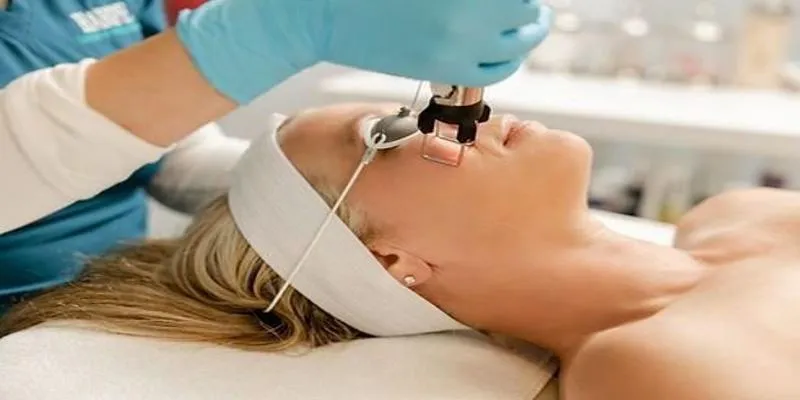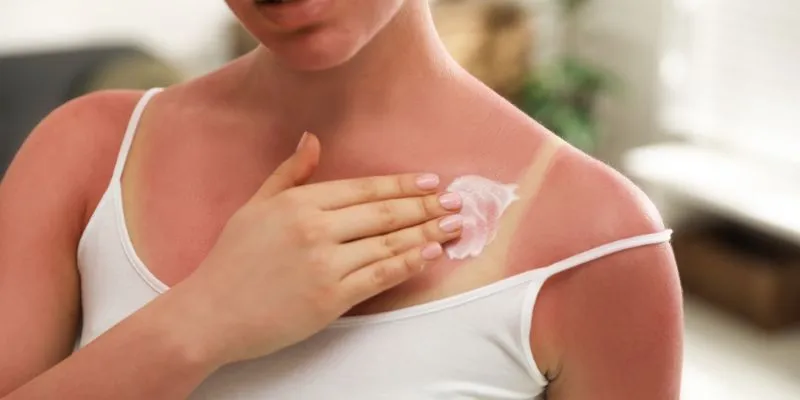Microdermabrasion for Acne Scars: What to Expect
Are persistent acne scars affecting your confidence? Microdermabrasion may be the solution you’ve been seeking. This non-invasive procedure is gaining popularity for its effectiveness in enhancing skin texture and diminishing acne scars. In this article, you’ll discover what microdermabrasion is, how it works on acne scars, and what you can expect from the procedure.
Understanding Microdermabrasion for Acne Scars
 Microdermabrasion
is a popular cosmetic procedure aimed at reducing the appearance of acne
scars. This treatment gently exfoliates the outermost skin layer, encourages
collagen production, and promotes cell turnover. Understanding how
microdermabrasion works can help you decide if it’s the right treatment for
you.
Microdermabrasion
is a popular cosmetic procedure aimed at reducing the appearance of acne
scars. This treatment gently exfoliates the outermost skin layer, encourages
collagen production, and promotes cell turnover. Understanding how
microdermabrasion works can help you decide if it’s the right treatment for
you.
How Microdermabrasion Works
Microdermabrasion involves using a device that sprays tiny crystals or employs diamond-tipped wands to remove dead skin cells from the surface. This process stimulates the production of new skin cells and collagen, which can help fill in shallow acne scars and improve skin texture. It is particularly effective for mild to moderate scarring, such as rolling or shallow boxcar scars.
Benefits for Acne Scars
Key benefits of microdermabrasion for treating acne scars include:
- Smoothing rough skin
- Reducing the appearance of superficial scarring
- Improving skin tone and complexion
- Encouraging collagen production
- Enhancing absorption of other skincare products
While microdermabrasion cannot completely eliminate deep acne scars, it can significantly improve skin appearance, making scars less noticeable.
How It Is Done
During a microdermabrasion treatment, you will feel a slight scratching sensation as the tool moves across your skin. Each session takes 30-60 minutes and involves no downtime. Typically, multiple treatments are needed, usually 5-12 sessions performed 2-3 weeks apart, to achieve optimal results. After these sessions, your skin may become pink and tender, but these symptoms usually fade after a few hours.
How Does Microdermabrasion Work on Acne Scars?
Microdermabrasion is a powerful approach to treating acne scars. This non- invasive treatment involves gentle exfoliation of the stratum corneum (outer skin layer), enhancing cell turnover and stimulating collagen production. Here’s a closer look at how microdermabrasion benefits acne scars:
Exfoliation and Resurfacing
The main mechanism of microdermabrasion involves the controlled removal of the stratum corneum. A handheld device sprays fine crystals or uses a diamond- tipped wand against the skin to abrade the epidermal surface. This helps smooth the irregular texture commonly associated with acne scars, resulting in a more even skin surface.
Stimulating Collagen Production
Once the stratum corneum is removed, your body’s natural healing process begins. This stimulates increased production of collagen and elastin, two critical proteins responsible for skin elasticity and firmness. Over time, increased collagen can help fill in depressed acne scars, leaving the skin smoother.
Improvement in Product Absorption
By removing the outermost layer of dead skin cells, microdermabrasion provides a clean slate for skincare products. It enhances the delivery of topical treatments deeper into the skin, aiding in the effectiveness of treating acne scars and maintaining healthy skin care.
Improving Blood Circulation
Gentle suction during the treatment increases blood flow to treated areas, delivering more oxygen and nutrients to the skin, facilitating healing and rejuvenation. For acne scars, this can mean faster fading and improved skin tone.
Benefits of Microdermabrasion for Acne Scar Removal
 Microdermabrasion
offers several compelling advantages for those looking to reduce acne
scarring. This painless, non-invasive treatment can significantly improve skin
texture and complexion.
Microdermabrasion
offers several compelling advantages for those looking to reduce acne
scarring. This painless, non-invasive treatment can significantly improve skin
texture and complexion.
Improved Skin Texture
One of the primary benefits of microdermabrasion is smoothing out rough, irregular skin texture from acne scars. The light exfoliating process removes dead skin cells and stimulates collagen production, leading to a softer and more refined skin surface. It can reduce shallow acne scars and make the skin appear more even over time.
Smoothing of Skin Tone
Microdermabrasion helps balance skin tone and may reduce discoloration associated with acne scars. Removing the top layer of dead skin reveals brighter, refreshed skin underneath, gradually fading dark spots and hyperpigmentation. It balances the skin, leaving it more radiant.
Increased Product Absorption
Another significant advantage of microdermabrasion is enhanced skin absorption of skincare products. Once the barrier of dead skin cells is removed, the skin can more fully receive topical treatments, allowing them to penetrate deeper and be more effective. This can amplify the benefits of your existing skincare routine, accelerating the healing of acne scars.
Minimal Downtime and Side Effects
Unlike more invasive treatments, microdermabrasion offers minimal downtime and fewer side effects. Most individuals can resume normal activities immediately after treatment, typically experiencing only mild redness that lasts a few hours. This makes it appealing for people with busy lifestyles who cannot afford extended recovery periods.
What to Expect During and After Microdermabrasion Treatment
The Treatment Process
Before your microdermabrasion session, you’ll be seated comfortably in a reclining chair. The aesthetician will cleanse your face of makeup and oils. The practitioner will then use a handheld device to gently spray fine crystals onto your skin while simultaneously vacuuming them away. This process exfoliates the layer of dead skin cells, stimulating collagen production to reveal fresher skin.
Treatment typically lasts 30-60 minutes, depending on the treated skin area. You may experience a mild prickling sensation while the device moves across your skin; it should not be painful. Patients often describe it as a mild massage or light licking sensation.
Immediate AfterEffects
Immediately after treatment, your skin may appear pink or red, similar to a mild sunburn. This is normal and usually fades within a few hours. Your face might feel somewhat tender or sensitive to touch. Some patients experience mild swelling or bruising, particularly around the delicate eye area.
Protect your newly exposed skin from the sun. Before leaving the clinic, apply a broad-spectrum sunscreen with at least SPF 30 and continue using it daily. Your aesthetician may recommend additional moisturizers or serums to calm and nourish your skin.
Long-term Outcomes and Care
In the days following treatment, your skin will likely feel smoother and brighter. Significant improvement in acne scarring typically requires multiple sessions spaced weeks apart.
To ensure long-lasting results, follow your aesthetician’s post-care instructions. This usually includes avoiding active skincare products, not picking or scratching the skin, and maintaining healthy hydration.
Conclusion
Ultimately, microdermabrasion can be an effective therapy for acne scars as part of a comprehensive skincare program. Although results may vary, many patients report substantial improvements in skin texture and tone after a series of treatments. Remember to have realistic expectations, follow all aftercare instructions, and be patient as your skin heals between sessions.


